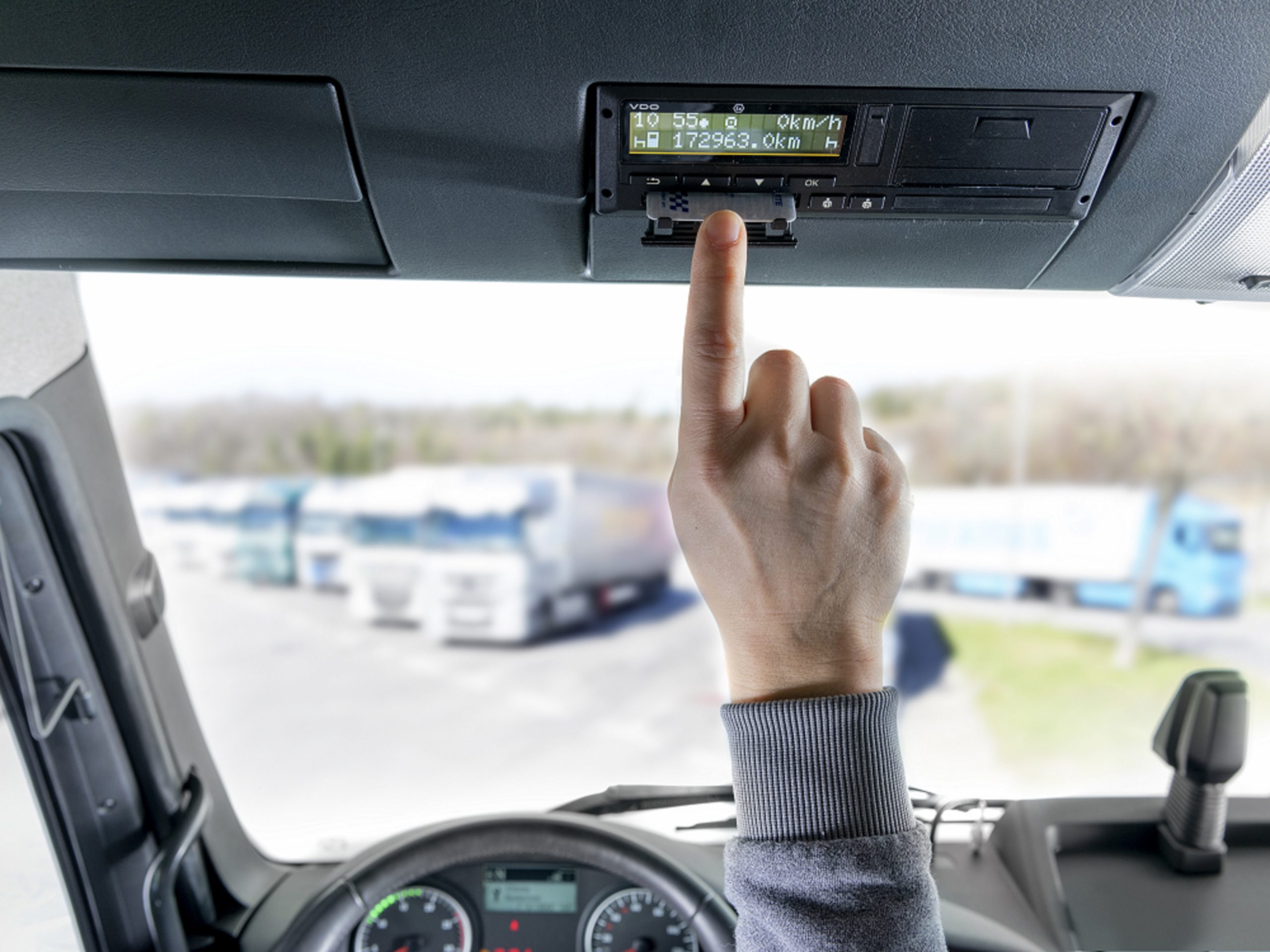Technology and trusted data ensure compliance and operational efficiency
From 21st of August 2023, newly registered commercial vehicles are compelled to travel Europe’s roads with the new second-version smart tachograph on board, enabling the control and enforcement of new regulations stipulated by the Mobility Package. And for the first time in the tachograph’s now hundred-year history, legislators have assigned additional control functions to it that go far beyond the recording of driving and rest times. However, its real value for fleet managers lies in the treasure trove of trusted data provided by the smart tachograph which facilitate not only compliance with regulations, but also efficiency and financial gains for fleets.
What new and enhanced features does the smart tachograph have?
Second-version smart tachographs like VDO’s DTCO 4.1 come with built-in new and enhanced features and functions that support fleet managers in their compliance duties now and in the years to come:
- Data collection and data processing: The device is suitable for recording loading and unloading operations, for working time calculations based on recorded data and for registering the new shortened rest period, which can be taken twice in succession under certain circumstances.
- Cabotage and driver postings: A GNSS module (Global Navigation Satellite System) automatically detects the vehicle’s position as well as border crossings and records the data in the mass memory, so that the driver no longer has to stop and register the new country manually after border crossings. For this, the DTCO 4.1 already uses data from the European satellite navigation system Galileo, which will offer added data security in the future.
- Connectivity: In addition to the integrated ITS interface that is now mandatory, the second-version smart tachograph also comes with a new Bluetooth interface.
- Driver Cards: Second-version smart tachographs are suitable for the new driver cards with expanded storage capacity from 28 to 56 days which will become mandatory at the end of 2024. Previous generations remain valid and compatible, though.
How will reliable tachograph data improve workflow efficiency?
However, the second-version smart tachograph alone does not improve a single workflow. Modern fleet data management platforms such as VDO fleet help the fleet manager to make full use of the data stock. They automatically extract the tachograph data from the mass memory, evaluate it and finally present all fleet-relevant data in an easy-to-understand overview – from the performance of individual drivers to the current ERRU score of the entire fleet. With a variety of reports, trusted tachograph data become a useful decision-making aid for the successful management of the fleet.
For example, data from the second-version’s smart tachograph can improve turnaround times and vehicle utilization, thus reducing the high cost pressure in the industry. Up-to-date position data for each vehicle makes it more convenient to plan routes, combine loads and facilitate ad-hoc changes. In addition, the software supports better allocation of drivers and freight by providing remaining driving and rest times, the last loading and unloading operation as well as other valuable information fleet managers need to reduce empty runs.
Furthermore, tachograph data can help fleet managers keep an eye on compliance across the fleet. Is a particular driver repeatedly violating the same rule? A driver-specific scorecard showing the number and severity of violations draws attention to the problem and training plans can be arranged more timely and efficiently. And the aggregated overview shows not only the fines already accumulated, but also the risk of a poor fleet-wide ERRU score.
The future of tachograph data utilization is bright
In addition to the existing opportunities to use data for daily operational improvements, the second-version smart tachograph also lays the foundation for new and innovative applications by being the universally trusted provider of secure, authenticated and reliable commercial vehicle data. It becomes a valuable asset to offer other value-added services such as the so-called tachograph toll. This solution provides real-time tachograph data to various toll service providers, eliminating the need for on-board toll devices and making toll billing more efficient.
- Load control using sensor data on individual axles.
- Automated billing and payroll services using working times and information on loading and unloading processes.
- Automatic reservation of rest or parking spaces using position and drive time data as well as current traffic and real-time rest area information.
- Optimized tire and maintenance management using data on mileage, acceleration, and weight data to determine tire wear.
- Digital fuel management using mileage and position data to know when a specific vehicle needs to be refueled.
- Real-time communications with and compliance support for drivers using drive and rest time data.
- Adoption of the eCall function using data on a vehicle’s position, ID and load consignment.
However, many of these functions rely on real-time data, for which the smart tachograph must first be linked to the online world. But once this is achieved – and some suppliers like VDO are already working on a plug-and-play solution that will close the current connectivity gaps in most fleets – there is no limit to the services that could use the second-version smart tachograph and its data to make life easier for fleet managers.










